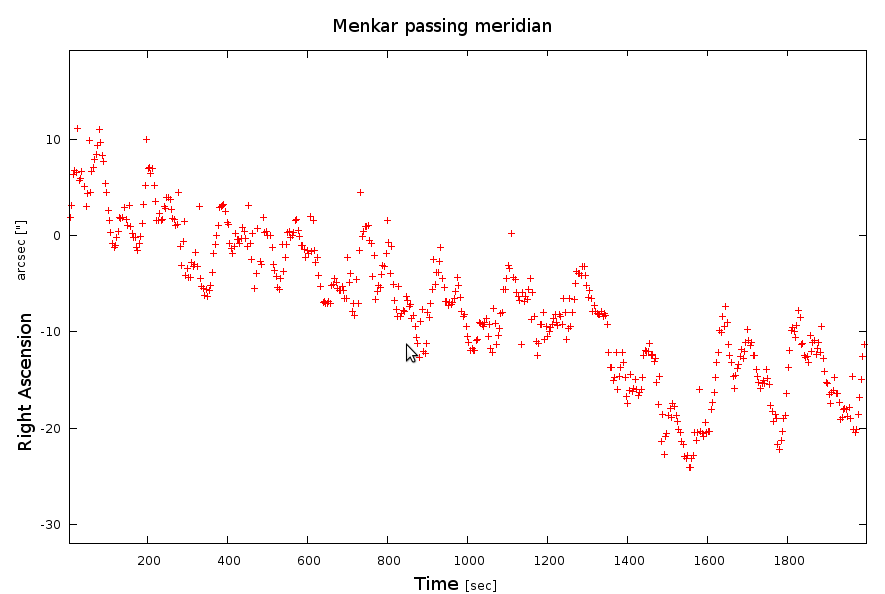

A short tutorial for determination of the periodic error of a telescope mount.
Periodic error of a telescope mount has its origin in gears of the sidereal driver. Common arrangement of gears of mount is the main cogwheel of the mount which is driven by a smaller ones (worm). The control force is carried from the main to the secondary wheel via a single tooth or more worse via a small contacting area on the tooth. As a consequence of the assembly, the driver periodically accelerates and decelerates of the sidereal movement of the telescope. The effect can be seen directly in small telescopes (without any corrections) as slow periodic drifting of objects throughout the field of view. Characteristic time periods are in order of minutes and their angular amplitude about a few arcseconds.
The periodic error can be suppressed by large gears, precise mechanics work on gears or an electronic correction (PEC). Perhaps (!), the best way to eliminate ones is use more than one driven worm or use of conical worms.
$ munipack find -th 10 -f 2 per_*.fits $ munipack timeserie --extname FIND -c X,Y --coo-type RECT --stdout > --tol=66 666,666 per_*.fits > perThe find tool detects bright stars (10 times over background noise and with FWHM about 2 pixels). The second command lists rectangular coordinates (--coo-type RECT) from FIND table (--extname FIND) of a selected object near of center (at pixel in 666,666) at circular surrounding of radius 66 pixels (--tol=66) (this is why we had used an alone bright star) to a standard output (--stdout). Results are stored in 'per' file (and timeserie.fits) with the structure:
Julian Date at mid X Y 2455945.24947 421.682 234.723
That's all. The output file can be used in a data analyzing tool to visualize and analyze your mount.

The above figure shows horizontal coordinate of star Menkar for ten periods of mount on MonteBoo observatory. The periodic pattern is result of the periodic error. The slow decreasing of the graph shows difference between angular velocity of the telescope and Earth rotation.
The above example of determination of the periodical error describes how to get a list of coordinates of a star on frame. One can be generalized on any task where coordinates of moving objects are required:
Manuals: Timeseries, Aperture Photometry. Tutorial: Light Curve